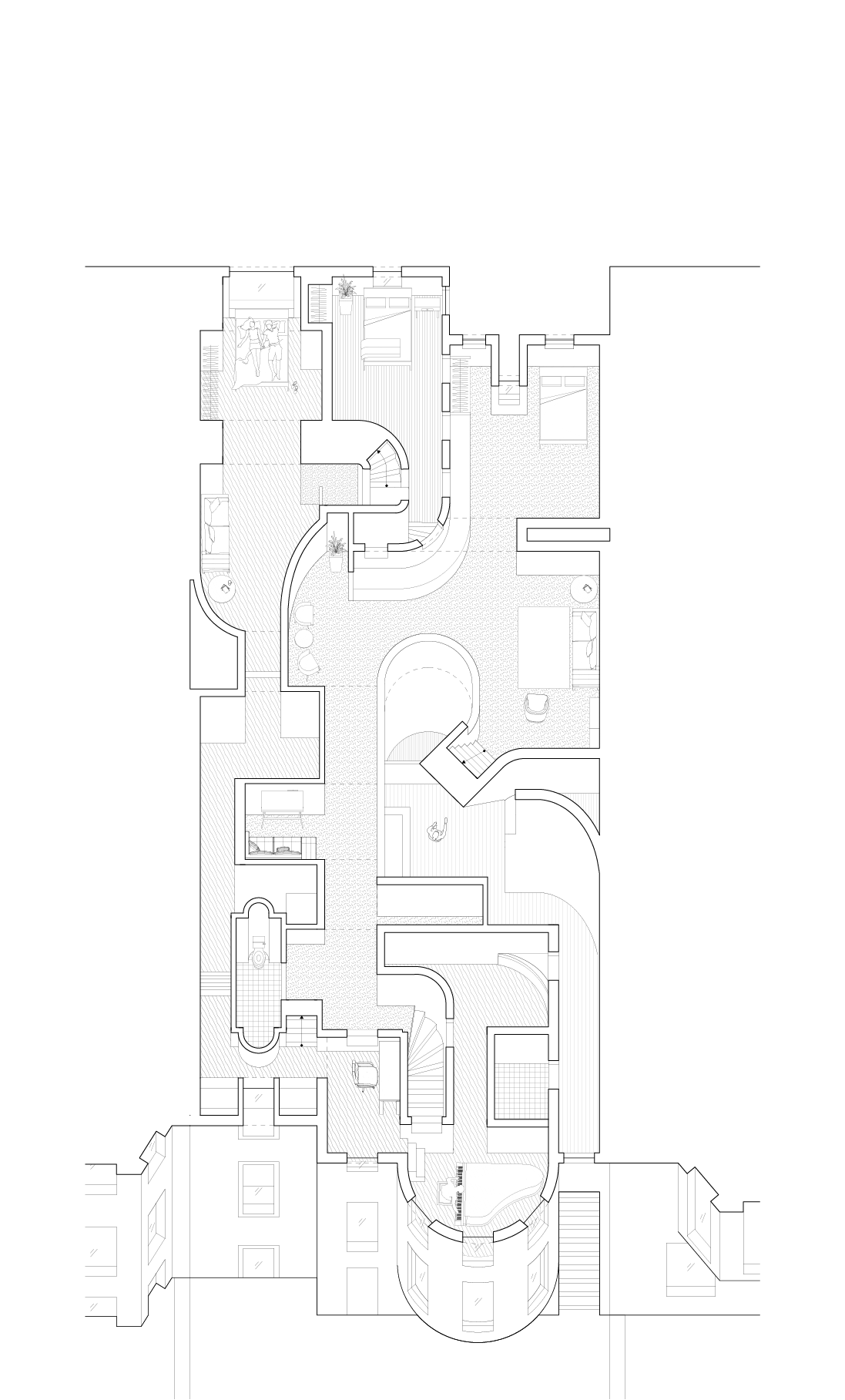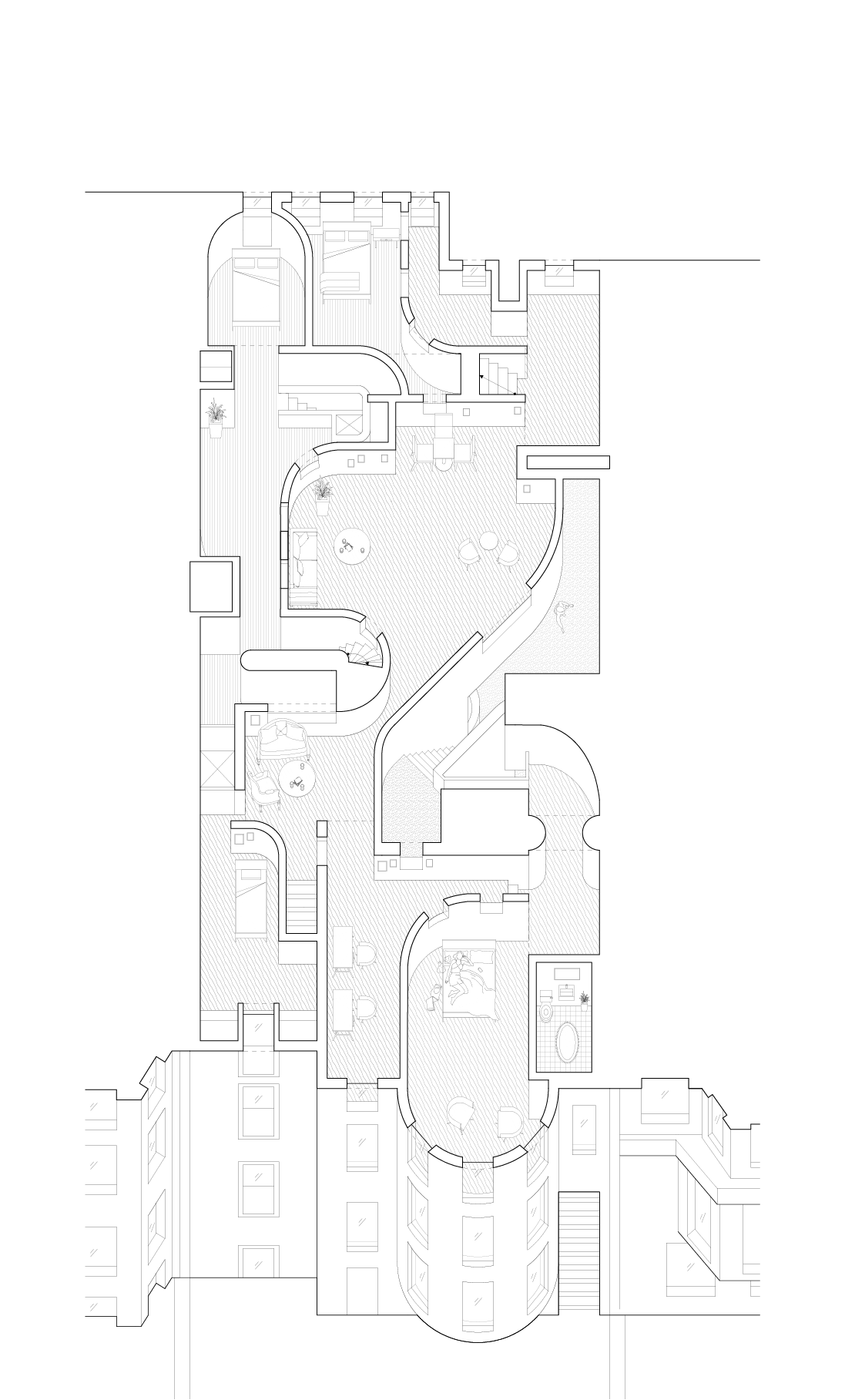
THICK SPACE:
2017 GSD Thesis
Advised by Andrew Holder
2017 GSD Thesis
Advised by Andrew Holder
Conceived of as an uninhabitable solid, poche is a form of architectural redaction. It is a representational tool with the power to obliterate differences between form and function, ornament and structure, inhabitable space and inhabitant; it is a total collapse of architecture’s skin, flesh, and bones. In its omissions and contradictions it incites architects to feverish imaginings ranging from the uncanny, to the horrific, to the wondrous.
Scamozzi filled it with fantastical doodles, Alberti proposed listening devices embedded in its thickness, entire rooms can be hidden within it, and bodies are immured ritualistically, literally, and decoratively.
Following this same impulse I began with a series of explorations and provocations; Fragments of Palladian churches, chuncks of piers and pilasters, and ornaments were estranged using deep perspective. Through twinning, as opposed to symmetry, Co-existant like objects with reciprocal but not identical experienes of light, shadow and color.

Question of simultaneity, thickness, and wall led me to the Row House whose party wall holds the distinction of being both the parting-wall and the common-wall, and is the unintended excess of a third space (often overlooked) in the act of division into mine and theirs.
The top drawing imagines the rich and labrynthic interior lives of row house buildings in the form of delirious auto-plan writing exercise. The poche of the party wall is thickened to the point that it becomes occupiable.
And both the row house and co-housing are defined by and constructed through formal and programmatic proximities and reciprocal relationships in which certain programs are consolidated and shared, while others are duplicated or twinned.
The top drawing imagines the rich and labrynthic interior lives of row house buildings in the form of delirious auto-plan writing exercise. The poche of the party wall is thickened to the point that it becomes occupiable.
And both the row house and co-housing are defined by and constructed through formal and programmatic proximities and reciprocal relationships in which certain programs are consolidated and shared, while others are duplicated or twinned.







